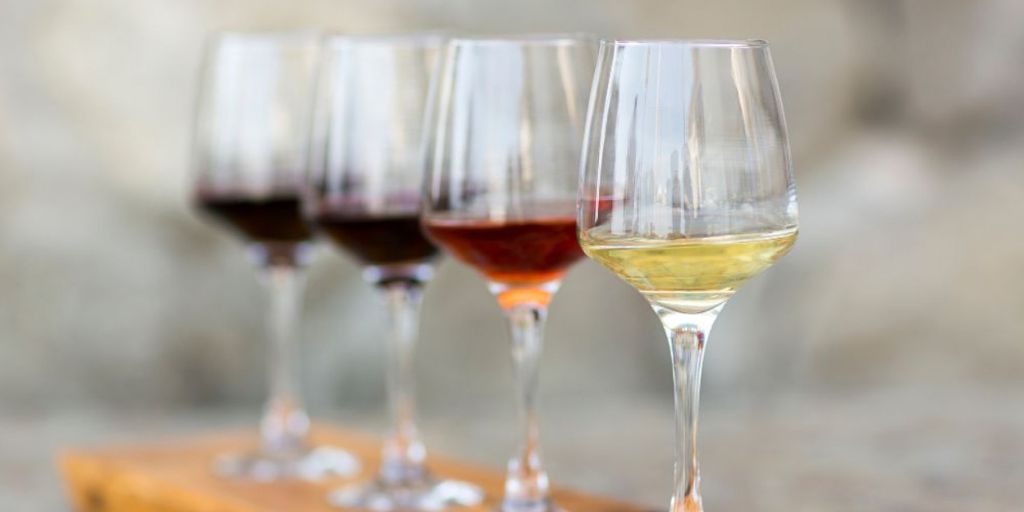Wine is much more than a beverage; it’s a rich sensory experience that engages your sight, smell, taste, and even touch. Among these senses, the aroma—or “nose”—of wine plays a critical role in shaping your perception and enjoyment.
The scents you detect when smelling wine offer clues about its grape variety, origin, winemaking process, and age. Learning to appreciate wine aromas enhances your tasting skills and deepens your connection to the wine in your glass.
This guide will help you unlock the fascinating world of wine aromas by explaining why aromas matter, how to smell wine properly, common aroma categories, and practical tips to refine your sensory abilities.
Why Wine Aromas Are So Important
The aroma of wine is often the first impression you get even before the first sip. When you swirl and sniff your glass, your nose picks up volatile compounds that release complex scents. These aromas influence what you expect from the wine’s flavor and can tell you a lot about its character.
Here are some reasons why appreciating wine aromas is crucial:
-
Predict Flavor Profile: Aromas often mirror the flavors in the wine, helping you anticipate its taste.
-
Identify Grape Varieties: Different grapes produce distinctive scents—knowing them aids recognition.
-
Understand Terroir and Winemaking: The environment and processes shape the aroma signature of each wine.
-
Enhance Overall Enjoyment: Engaging your nose enriches the wine-drinking experience by adding layers of sensory pleasure.
Since much of wine’s complexity lies in its aroma, training your sense of smell is the key to becoming a more knowledgeable and appreciative wine drinker.
The Science of Wine Aromas: Primary, Secondary, and Tertiary Notes
Wine aroma compounds are a sophisticated mixture created by the grape itself, the fermentation process, and aging. Experts typically classify wine aromas into three groups:
Primary Aromas
These come directly from the grape variety and include fruity, floral, herbal, and sometimes vegetal notes. For example:
-
Cabernet Sauvignon may show blackcurrant and green bell pepper aromas.
-
Chardonnay often has apple, pear, and melon scents.
-
Riesling is known for its citrus and floral notes.
Primary aromas provide the foundation of the wine’s bouquet and vary greatly between grape types.
Secondary Aromas
Secondary aromas develop during fermentation and early winemaking. These can include:
-
Yeasty or bready scents from yeast action.
-
Buttery or creamy aromas from malolactic fermentation.
-
Light spice or herbal notes influenced by fermentation vessels.
For example, sparkling wines and Champagne often feature distinct yeast and bread dough aromas due to extended contact with lees (dead yeast cells).
Tertiary Aromas
Tertiary aromas arise from aging in oak barrels or in the bottle over time. Common examples include:
-
Vanilla, toast, smoke, or coconut from oak barrel aging.
-
Leather, tobacco, dried fruit, and earthy notes from bottle aging.
These aromas add complexity and depth, especially in premium wines.
How to Properly Smell Wine
1. Select the Right Glassware
A glass with a tulip shape and narrower rim concentrates aromas towards your nose. The bowl allows swirling to aerate the wine, releasing volatile compounds.
2. Pour the Wine
Fill your glass to about one-third full. This allows enough space to swirl the wine without spilling.
3. Swirl to Aerate
Gently swirl the wine in your glass. This introduces oxygen and helps release aromatic molecules.
4. Take a Gentle Sniff
Bring the glass to your nose and take a slow, gentle sniff. Avoid inhaling too forcefully to prevent overwhelming your senses.
5. Multiple Sniffs Over Time
Aroma evolves as the wine breathes. Take several sniffs over a few minutes to detect changing scent layers.
6. Engage Your Memory and Imagination
Try to connect the aromas with familiar scents like fresh fruit, flowers, spices, or even non-food items like wet stone or leather.
Common Wine Aroma Families and Examples
Developing a vocabulary of common wine aromas will improve your ability to identify and appreciate scents.
Fruity Aromas
Fruity aromas are among the most prominent in wine and vary widely between red and white wines:
-
Red Wine Fruits: Cherry, raspberry, blackberry, plum, blackcurrant.
-
White Wine Fruits: Green apple, lemon, lime, peach, apricot, pineapple, mango.
Example: A young Pinot Noir might burst with cherry and raspberry, while a Sauvignon Blanc often shows citrus and tropical fruit.
Floral Aromas
Many wines feature floral scents reminiscent of flowers such as:
-
Rose petals
-
Violet
-
Jasmine
-
Elderflower
Example: Gewürztraminer is famous for its rose and lychee aromas.
Herbal and Vegetal Aromas
Some wines carry herbal or green notes like:
-
Mint
-
Eucalyptus
-
Bell pepper
-
Grass
-
Thyme
Example: Cabernet Sauvignon often shows green bell pepper notes, especially when grown in cooler climates.

Spice Aromas
Spices add warmth and intrigue, common in both red and white wines:
-
Black pepper
-
Clove
-
Cinnamon
-
Nutmeg
-
Vanilla (usually from oak aging)
Example: Syrah/Shiraz often has a peppery spice, while oaked Chardonnay can show vanilla and cinnamon.
Earthy and Mineral Aromas
Earthiness is often linked with soil and terroir:
-
Wet soil
-
Mushroom
-
Truffle
-
Flint or chalk
Example: Pinot Noir from Burgundy frequently displays earthy and mushroom aromas.
Oak-Derived Aromas
Oak barrels impart distinctive scents:
-
Toast
-
Smoke
-
Coconut
-
Vanilla
Example: A California Cabernet Sauvignon aged in new oak barrels often exhibits rich vanilla and toasted notes.
Yeasty and Fermentation Aromas
Produced during fermentation or bottle aging:
-
Bread dough
-
Butter (diacetyl)
-
Cheese rind
Example: Champagne’s signature aroma of freshly baked bread comes from lees aging.
Tips to Sharpen Your Aroma Appreciation
Practice Regularly
Just like developing taste buds, your nose benefits from regular practice. Smell fresh herbs, spices, fruits, and flowers daily to build scent memory.
Use Wine Aroma Kits
Wine aroma kits include vials of typical wine scents, helping you learn to recognize and recall aromas.
Do Blind Smelling Sessions
Try smelling wines without seeing the label to focus on aroma alone, improving objectivity.
Compare Different Varietals Side-by-Side
This highlights unique aroma profiles and sharpens your differentiation skills.
Avoid Strong Scents Around You
Perfumes, strong foods, or smoke can interfere with your ability to detect wine aromas accurately.
Overcoming Common Challenges
Nasal Congestion or Allergies
If you’re congested, your sense of smell will be compromised. Consider tasting when you’re clear or try a steam inhalation to open nasal passages.
Young Wines Can Smell Harsh
Some young wines may have “hot” alcohol or muted aromas. Decanting or letting the wine breathe softens these effects.
Complexity Can Be Overwhelming
Don’t worry about identifying every scent. Enjoy the overall aroma and gradually build your confidence.
Conclusion
Appreciating wine aromas transforms your wine drinking from a casual activity to an immersive sensory adventure. By learning the science behind aromas, practicing proper smelling techniques, familiarizing yourself with common scent families, and training your nose regularly, you unlock deeper layers of complexity and enjoyment in every glass.
Next time you pour wine, pause and inhale deeply. Let your nose guide you through the wine’s story — its grapes, its terroir, its history. This aromatic journey is one of the most rewarding parts of wine appreciation.


